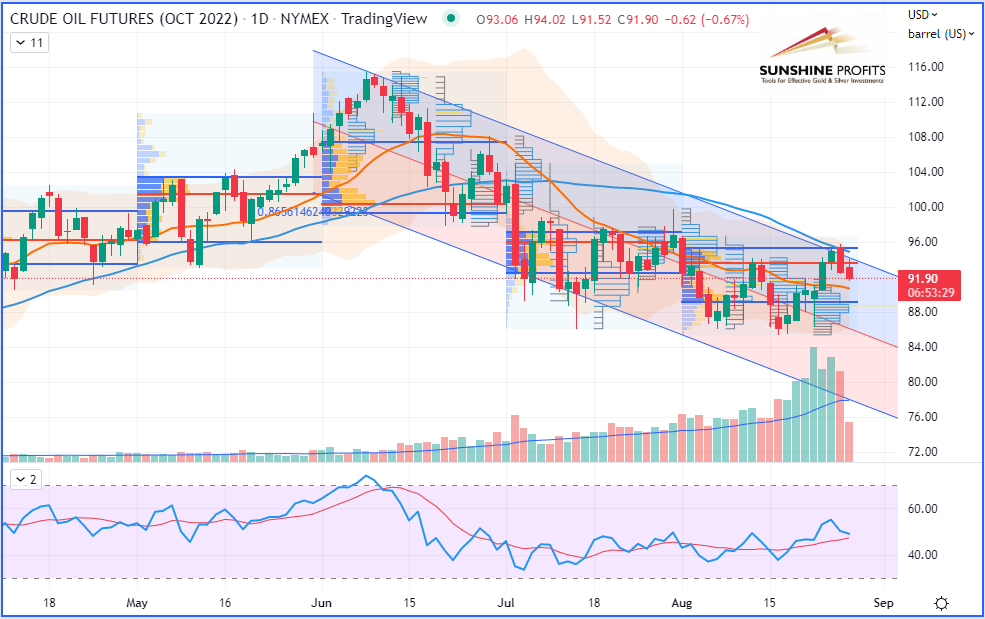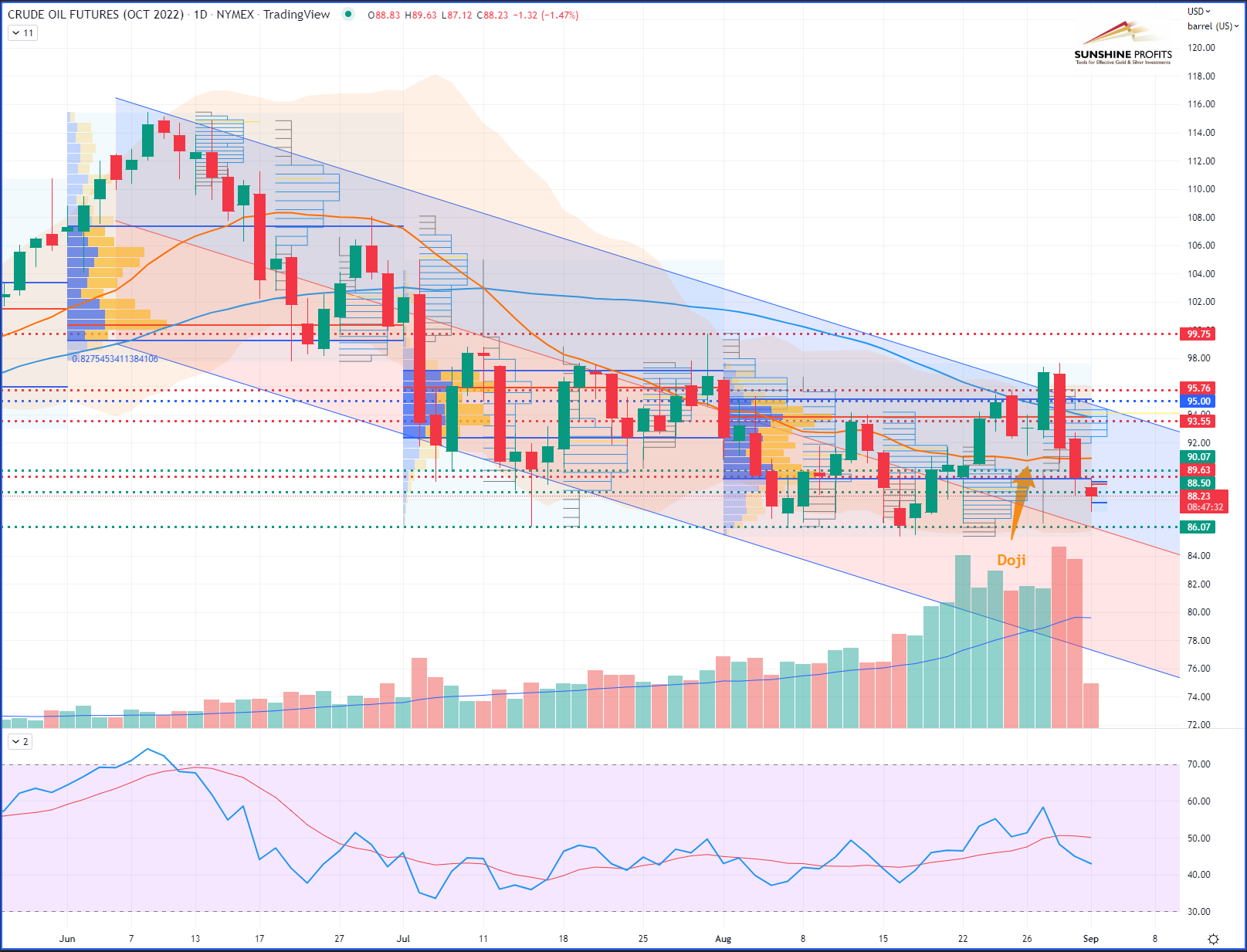Today, I will provide a quick review of last week’s WTI crude oil trade, which has been a little more complex to manage than I originally thought.
My short trade entry was done right around $94.50-95.25 – around the 50-day moving average (DMA) – with a stop placed at the previous swing low ($99.75).
Then, as the market fell rapidly into the August value area (VA), I decided to drag my stop lower ($95.76), and so well above the 50-DMA. In the meantime, as the market retraced slightly while finding rejection to the upside, it finally settled by forming a “doji” candlestick on Friday.
A reminder on risk management:
If, like me, you followed the risk management guidelines that I presented in this article that were recalled below the trading position section – that is to say, by dragging the stop slightly lower when price was reaching levels below the midpoint to target one ($90.07) – then, let’s recap how to locate the new stop placement by taking the following example:
- Let’s say you entered at $95;
- The first target was defined at $90;
- When the price falls below the midpoint: 90.07+(95-90.07)/2 = $92.54;
- The market made its low on Friday (Aug. 26) at $91.08 (so just $1 above its initial target);
- Thus, given that this low was $1.46 below the midpoint (92.54-91.08 = 1.46), the stop can be dragged down $1.46 below the entry ($95) to protect the trade – therefore, at precisely $93.55.

WTI Crude Oil (CLV22) Futures (October contract, daily chart) – Chart based on Aug. 26 data, however the market closed on a “doji” candle (in other terms, it closed at its open price)
Personally, this is what I’ve been doing myself:
Since I provided three targets for that trade, I entered with three micro e-mini contracts (MCL), with three initial stops placed at $99.75. On Friday, Aug. 26, I dragged the stop for one contract (first third of the position) at $95.76, then another stop for the second contract (second third of the position) at $93.55 (as defined below), and I left the third stop (last third of the position) at the initial level of $99.75. By doing so, my risk was spread to different levels.
If you noticed in my last article, I suggested reducing the risk just before the weekend. This is crucial to do before the weekend. I know there might be some slippage risk eventually when the market opens on Sunday night, and if something happens during the weekend. However this is still better than doing nothing and seeing some profits being swept away by sudden events that were not priced in the market.
On Saturday, there was a geopolitical event that wasn’t expected at all, and, as a result, it shook the oil market towards the upside on Monday, Aug. 29.
Indeed, there were unexpected fights in Libya's capital of Tripoli – the worst fighting in years. This was quickly priced into the oil market on Monday because the situation could have a significant impact on Libyan oil exports. Consequently, during that strong move up, two of my stops got triggered on Monday, Aug. 29. Those were placed at $93.55 (so about $145 gross profits) and $95.76 (about $77 losses) on micro e-mini contracts, excluding commissions.
Since I had left my last target at $86.07 for the last remaining third of my trading position, as the market today just moved below my second stop and also made a lower low over the third consecutive day, I just finally dragged my last stop at the high of today’s candlestick. Hopefully, this will leave enough breathing space to reach the last and final target ($86.07).

WTI Crude Oil (CLV22) Futures (October contract, daily chart) – Chart based on today’s updated data.
I hope this will make sense, and help you see risk management in a more dynamic dimension.
